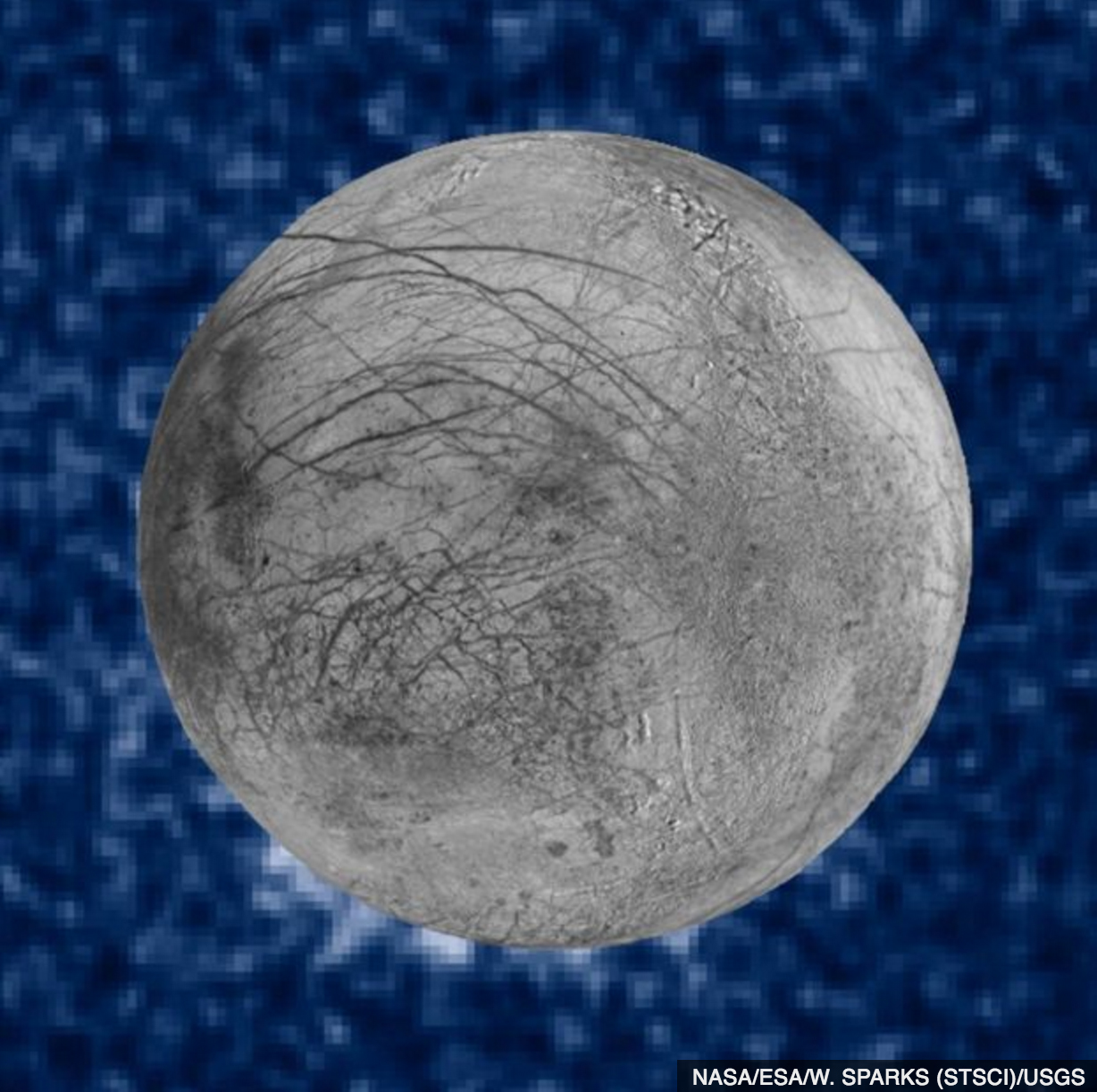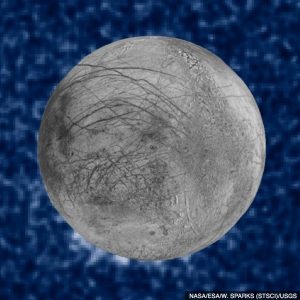
Saturn’s icy moon Europa erupting water

Scientists from NASA obtained further evidence to show that Jupiter’s icy moon throws jets of water out into space. Back in 2013, using Hubble telescope, scientists first reported this behaviour.
Europa’s huge subsurface ocean of liquid water, is one of the most likely placed find microbial life beyond earth.
Hubble made its latest identification by studying Europa in ultraviolet wavelengths, as it passed in front of Jupiter and see if the giant planet’s light was in any way being absorbed by material emanating from the moon’s surface.
According to William Spark one of the lead astronomer on the study, said he would think of no natural phenomenon other than water plumes that might produce such protuberances.
“We do not claim to have proven the existence of plumes, but rather to have contributed evidence that such activity may be present.”
The location for the putative jets looks very similar to the region where Hubble earlier detected an excess of oxygen and hydrogen the critical component parts of water.
The suggestion that jets reach several hundred kilometres in height before then falling back on to Europa, a calculation based on the 2013 –reported work estimated a volume of water equivalent to an Olympic swimming pool could be being spewed into space about every eight minutes.
The water jets have already been seen up close at Enceladus, an icy moon of Saturn, as these emanate from a series of fissures at its south pole.
The Cassini spacecraft, orbiting currently at Saturn, has dived through the emissions to taste some of their chemistry.
The US Space Agency (NASA) has just sent a “Juno“ satellite to Jupiter but has no detection equipment for the presence or activity of microbes.
Curt Niebur said “the Europa flyby mission which will launch in the 2020s is not a life-finding mission, but is focused on assessing the habitability of Europ.”
Paul Hertz, the director of the astrophysics at NASA, said “on Earth, life is found wherever there is energy, water and nutrients. So we have a special interest in any place that might posses those characteristics. And Europa might be such a place.”
